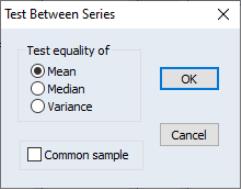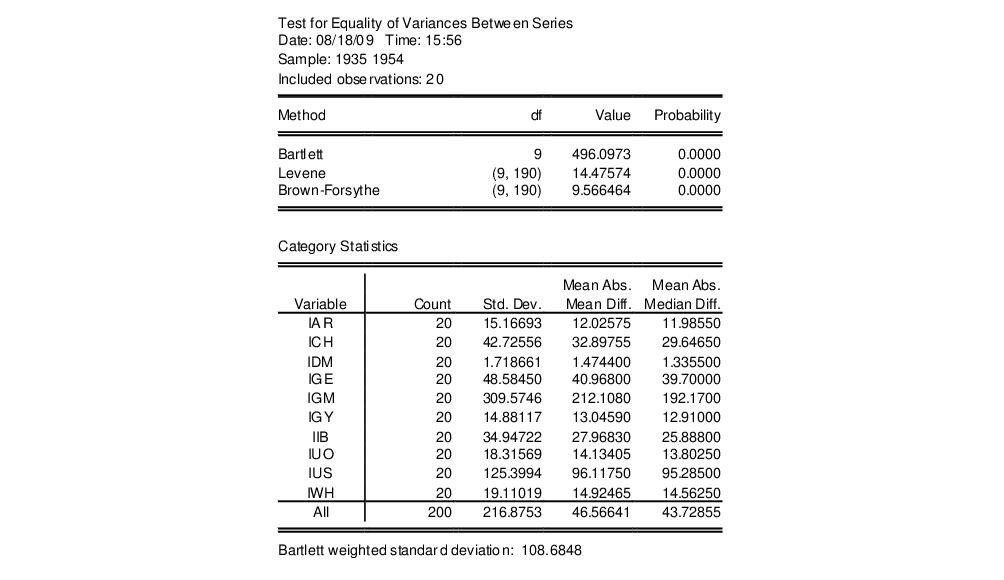Tests of Equality
This view tests the null hypothesis that all series in the group have the same mean, median (distribution), or variance. All of these tests are described in detail in
“Equality Tests by Classification”.
The Common sample option uses only observations for which none of the series in the group has missing values.
As an illustration, we demonstrate the use of this view to test for groupwise heteroskedasticity. Suppose we use data for seven countries over the period 1950–1992 and estimate a pooled OLS model (see
“Pooled Time Series, Cross-Section Data”). To test whether the residuals from this pooled regression are groupwise heteroskedastic, we test the equality of the variances of the residuals for each country.
First, save the residuals from the pooled OLS regression and make a group of the residuals corresponding to each country. This is most easily done by estimating the pooled OLS regression using a pool object and saving the residuals by selecting in the pool object menu or toolbar.
Next, open a group containing the residual series. One method is to highlight each residual series with the right mouse button, double click in the highlighted area and select . Alternatively, you can type show, followed by the names of the residual series, in the command window.
Select , and choose the Variance option in the dialog box.
Here we see results for testing the equality of variances for investment by various firms using data in the workfile “Grunfeld_baltagi_pool.WF1”. The test statistics provide strong evidence of the presence of firmwise heteroskedasticity, decisively rejecting the null hypothesis of equal variances.


